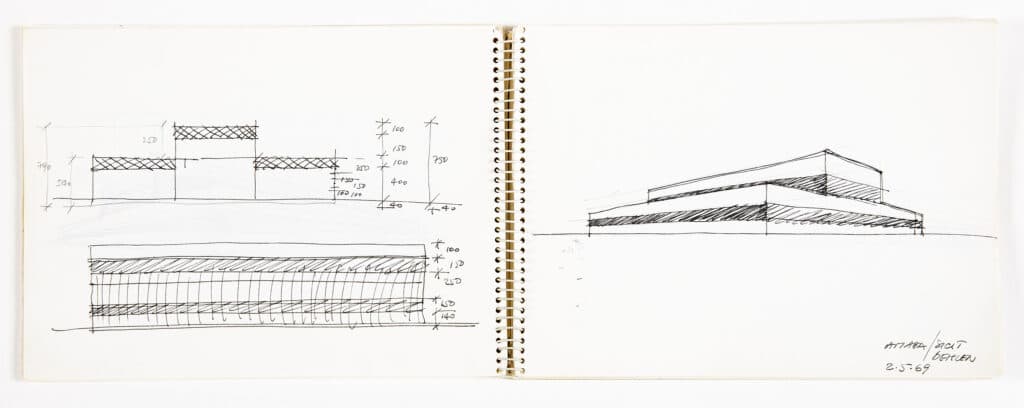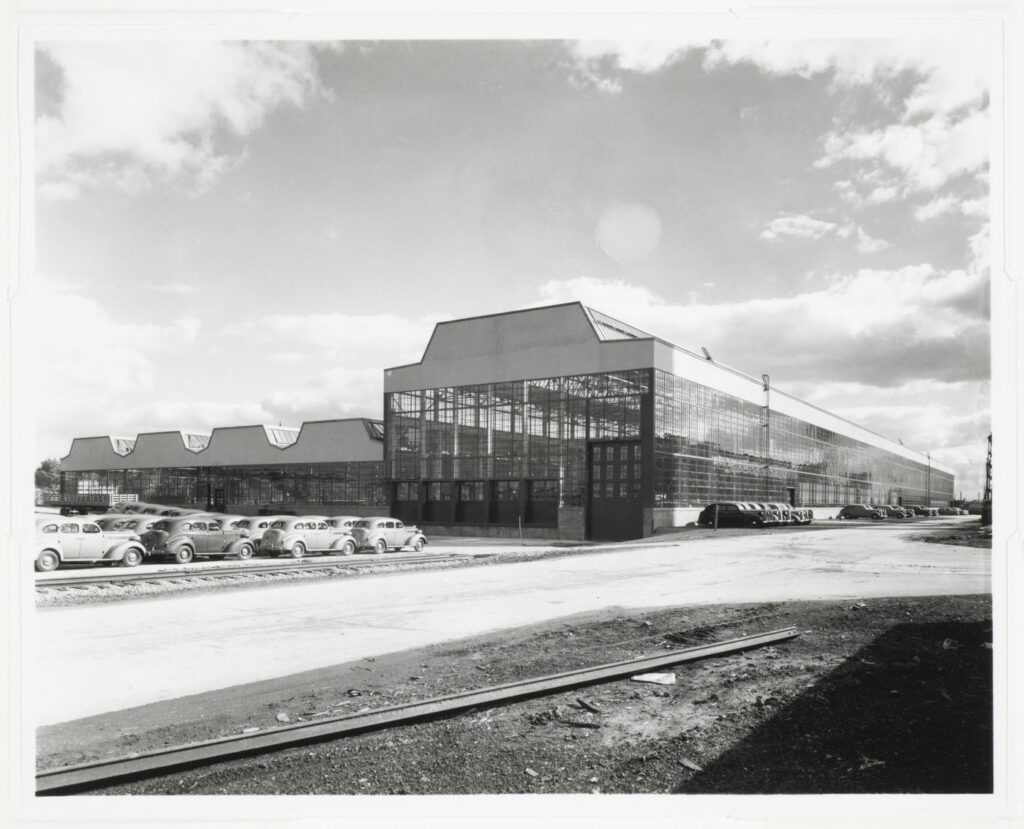The Discreet Charm of the Bureaucratic
When Henry-Russell Hitchcock drew a crooked line between the architecture of genius and the architecture of bureaucracy in a famous essay of 1947, he could hardly have predicted that within two decades, neo-avant-gardists around the world would embrace bureaucratic architecture because of its liberatory capacities—precisely the opposite reading of what Hitchcock identified as stultifying and lacking in imagination. These neo-avant-gardists desired architectures that served not as emblems of the individual liberty of a creative genius, but instead as generic spaces capable of liberating their users and occupants.
On a spread from a 1969 sketchbook by Superstudio’s Adolfo Natalini, we see evidence of the emergence of this attitude, which culminated in the group’s Continuous Monument project. His simple perspective drawing seems to mimic the anonymous ‘daylight factories’ built for the American automotive industry in the 1930s, many of which were designed by Hitchcock’s principal villain, the Detroit firm Albert Kahn Associates. Kahn’s output, for Hitchcock, was characterized by ‘a certain rightness, straightforwardness, and cleanliness both actual and symbolic,’ which left the buildings ‘parallel to the quality of a finely designed and skilfully assembled machine’. [1] What made the work so uninspiring to Hitchcock was that it could only reasonably be assessed quantitatively rather than qualitatively, effectively removing the need for interpretation.


Such bureaucratic architecture was also supremely boring to draw. In fact, drawing is probably the wrong word altogether to describe the Kahn firm’s practice. Their construction documents for daylight factories were exercises in specification, selection, and scheduling rather than representations. The result was a gridded architecture of modularity and repetition, indifferent to the activities taking place within and capable of accommodating nearly anything.
For Natalini, whose intellectual context was informed as much by Operaismo as by the Modern Movement, the calculated anonymity of bureaucratic architecture was its strength. Theorists of operaismo conceived of the factory as a dialectical space of both atomization and solidarity, of acquiescence and refusal, of oppression as well as organization. To extend this potentially liberatory architecture around the globe was Superstudio’s most dramatic proposal, and this indifferent form of architecture gave rise to drawings with a meditative quality in which we see the same thing, over and over. Liberation, in the case of the Continuous Monument, meant not the freedom to design, but instead freedom from it.
Michael Abrahamson is a faculty member at the University of Utah School of Architecture, where his research and teaching explore the materiality of buildings and methods of architectural practice across the twentieth century.
This text was submitted in the short form category (≤ 350 words) of the Drawing Matter Writing Prize 2020.
Notes
- Henry Russell Hitchcock, ‘The Architecture of Bureaucracy and the Architecture of Genius’ in Architectural Review n. 101 (January 1947), 5.
